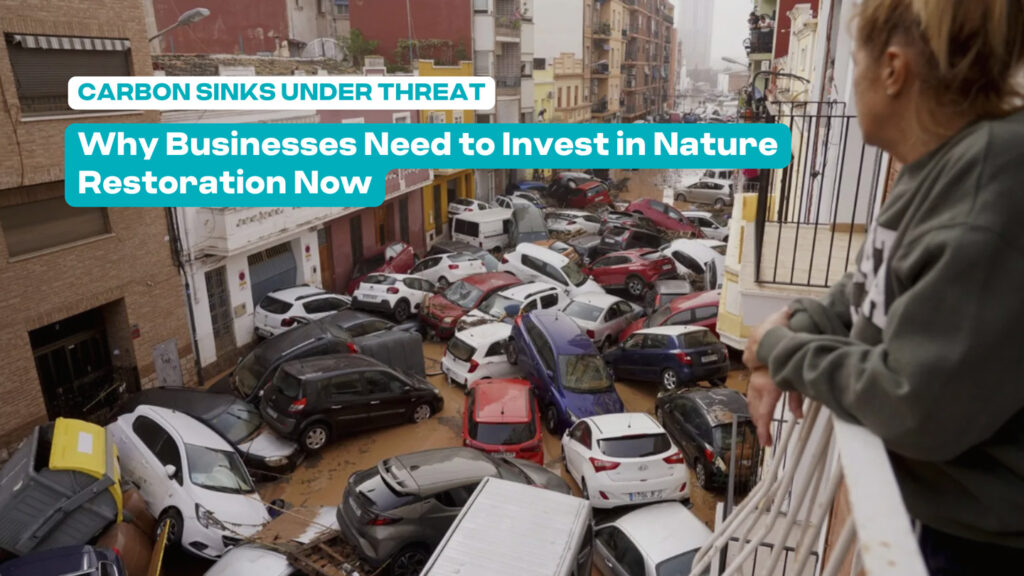The urgency of climate change is an undeniable reality that many businesses are coming to terms with. Temperatures rise, ice caps melt, and extreme weather patterns disrupt our world in an ever more frequent fashion. Businesses, which have a substantial environmental footprint, are in the spotlight. As public and regulatory pressures mount, these corporate entities grapple with how to reconcile profitability with environmental responsibility.
Enter the concept of carbon credits, a seemingly win-win solution that promises environmental redemption while maintaining operational viability. But how viable are carbon credits as a solution for carbon emissions?
Understanding Carbon Credits
So, what exactly are carbon credits? Think of them as environmental IOUs. When businesses produce carbon emissions, which they invariably do, they can “offset” these emissions by funding eco-friendly projects elsewhere. The foundational principle is balance: emit here but reduce there. While the digital age has undoubtedly amplified the buzz around carbon credits, their roots can be traced back to environmental trailblazers in the previous century. The 1970 US Clean Air Act, for instance, was an early harbinger of policies designed to balance economic growth with environmental integrity.
The Benefits of Carbon Credits
The appeal of carbon credits to the corporate world is multi-faceted. On a fundamental level, they provide a financially viable path for industries where traditional emission reduction measures are prohibitively expensive. For example, for sectors like aluminium production, the direct costs associated with reducing emissions can be daunting. Beyond cost savings, carbon credits offer a versatility that modern businesses crave. They can navigate the turbulent waters of global markets, operational challenges, and regulatory landscapes, all while ensuring their carbon balance sheet remains in the green. Moreover, since the impact of carbon emissions is a shared global concern, reductions anywhere benefit everyone everywhere.
Challenges and Controversies
Yet, as with any promising solution, carbon credits come with their share of challenges. A prevalent critique is the notion of “greenwashing,” where businesses deploy carbon offsets more as a marketing gimmick than a genuine environmental commitment. This cosmetic approach undermines the very essence of carbon offsetting. The issue of “additionality” further muddies the waters. Here’s the crux: are the green projects, funded by carbon credits, genuinely additional, or would they have occurred regardless? Real-world repercussions of these challenges are evident in instances like the Bootleg fire in Oregon of 2021, which decimated forests earmarked for offsetting, and controversies surrounding projects like Verra’s REDD+.
billion-air’s Role in the Carbon Credit Landscape
In this complex landscape, billion-air emerges as a beacon of hope. Recognizing both the potential and pitfalls of carbon credits, billion-air offers services tailored to guide businesses in carbon credit investing. The company acknowledges the genuine concerns surrounding carbon credits, such as the “additionality” challenge, where credits must result in tangible, additional reductions that wouldn’t have occurred otherwise. With their robust verification process, billion-air ensures that businesses invest in legitimate, impactful projects.
Moreover, with billion-air’s services, businesses aren’t navigating the carbon credit terrain alone. They’re backed by expertise, research, and a commitment to genuine sustainability. billion-air’s approach aligns with the industry’s call for more stringent guidelines and validation procedures, emphasizing transparency and verifiability.
Why Businesses Should Consider billion-air for Carbon Credit Investing
The world of carbon credits in its current stage can be daunting. It’s a realm where environmental science intersects with global finance, regulatory standards, and corporate strategy. Treading these waters requires a trusted and seasoned guide, and this is where billion-air shines.
With emphasis on transparency, efficacy, and integrity, billion-air shield businesses from potential missteps on their path to net zero.
The Future of Carbon Credits
The carbon credit landscape is evolving, with emerging technologies, shifting regulatory standards, and a more informed public. Navigating this new world requires foresight and adaptability, qualities intrinsic to billion-air. We’re not just adapting; we’re leading the way, ensuring compliance with more robust guidelines, and ensuring businesses achieve maximum environmental impact for every dollar invested.
The Path Forward
Carbon credits, in their essence, represent hope—a tangible path for businesses to reconcile growth with environmental stewardship. The journey isn’t devoid of challenges, but with informed choices and the right partners, the promise of a greener, more sustainable future is well within reach.
Ready to be a torchbearer in this green revolution? Explore billion-air’s suite of services and discover how your business can be a linchpin in our collective fight against climate change. Together, let’s craft a narrative of hope, change, and sustainable growth.




